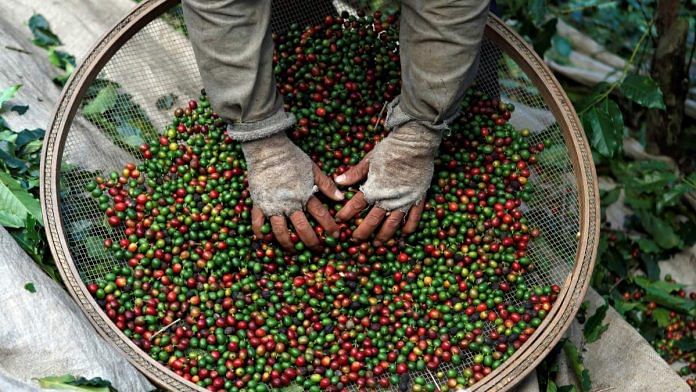New York: The weather pattern El Nino, widely expected by forecasters to develop globally in the second half of the year, poses a larger risk for production of the robusta coffee variety than for milder arabica coffee, analysts and weather experts said.
The weather phenomenon, which disrupts rainfall and temperature patterns, could further tighten supplies and raise prices of robusta, which has a higher caffeine content than arabica and is largely used to make instant coffee.
The world’s two largest robusta producing countries, Vietnam and Brazil, could suffer yield losses if a strong El Nino develops, analysts and weather experts said.
Robusta prices have surged this week to a 15-year peak due to tight supply and on worries about future production due to El Nino.
Coffee analyst Fernando Maximiliano, from broker StoneX, said there was a nearly 40% drop in robusta coffee production in Brazil the last time a strong El Nino developed and caused a drought in Brazil’s Espirito Santo state between 2015 and 2016.
Maximiliano said that area is better prepared nowadays after investments in reservoirs and irrigation systems, but the crop’s potential will all depend on the intensity of expected dry weather caused by El Nino.
Vietnam’s National Centre for Hydro-Meteorological Forecast predicts a 70% to 80% chance of El Nino developing mid-2023, and extending into 2024. The institution expects record temperatures in the country during that period.
For arabica coffee – the milder variety preferred by high-end cafes – risks seem smaller. Central and South American producers that have suffered from excess rains during the last three years of La Nina are seen having more normal weather.
In the world’s largest arabica producer Brazil, El Nino could reduce the chances of frosts, said Natalia Gandolphi, coffee analyst at broker HedgePoint Global Markets.
She said, however, the crop could be hurt if temperatures stay too high during the flowering stage of the 2024/25 crop around September and cause trees to drop too many flowers.
(Reporting by Marcelo Teixeira; Editing by Sonali Paul)
Disclaimer: This report is auto generated from the Reuters news service. ThePrint holds no responsibilty for its content.



